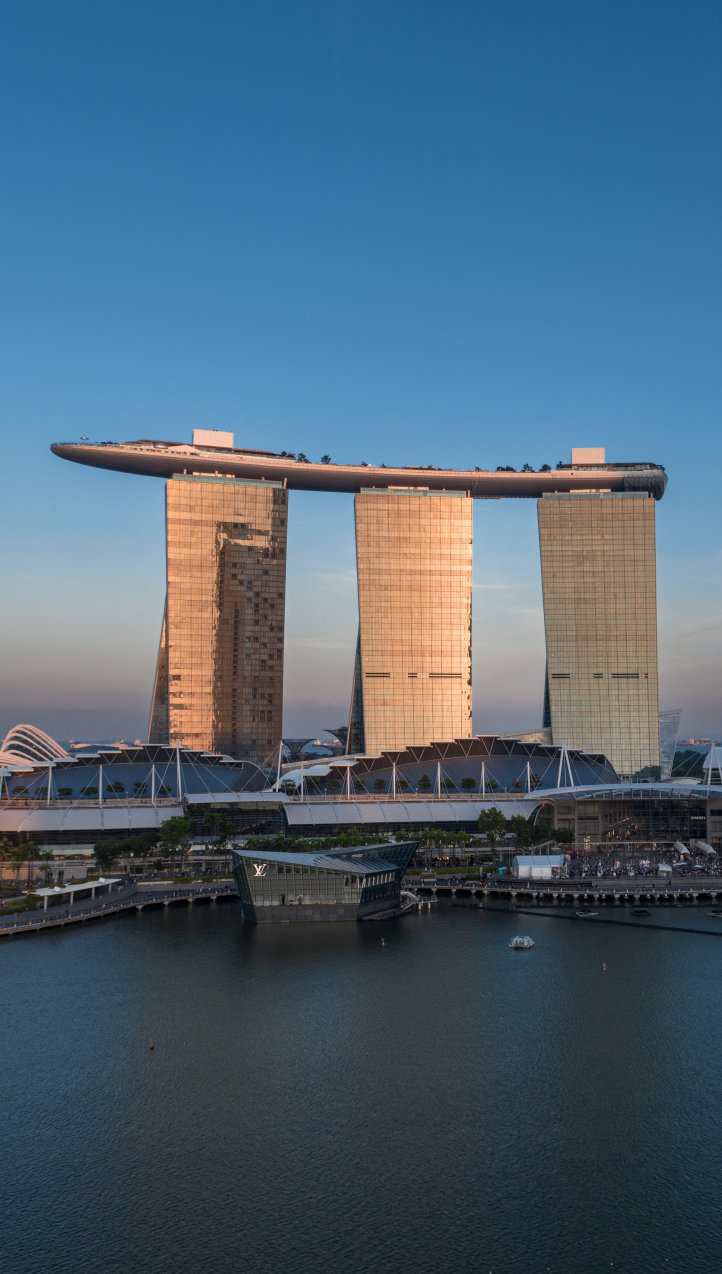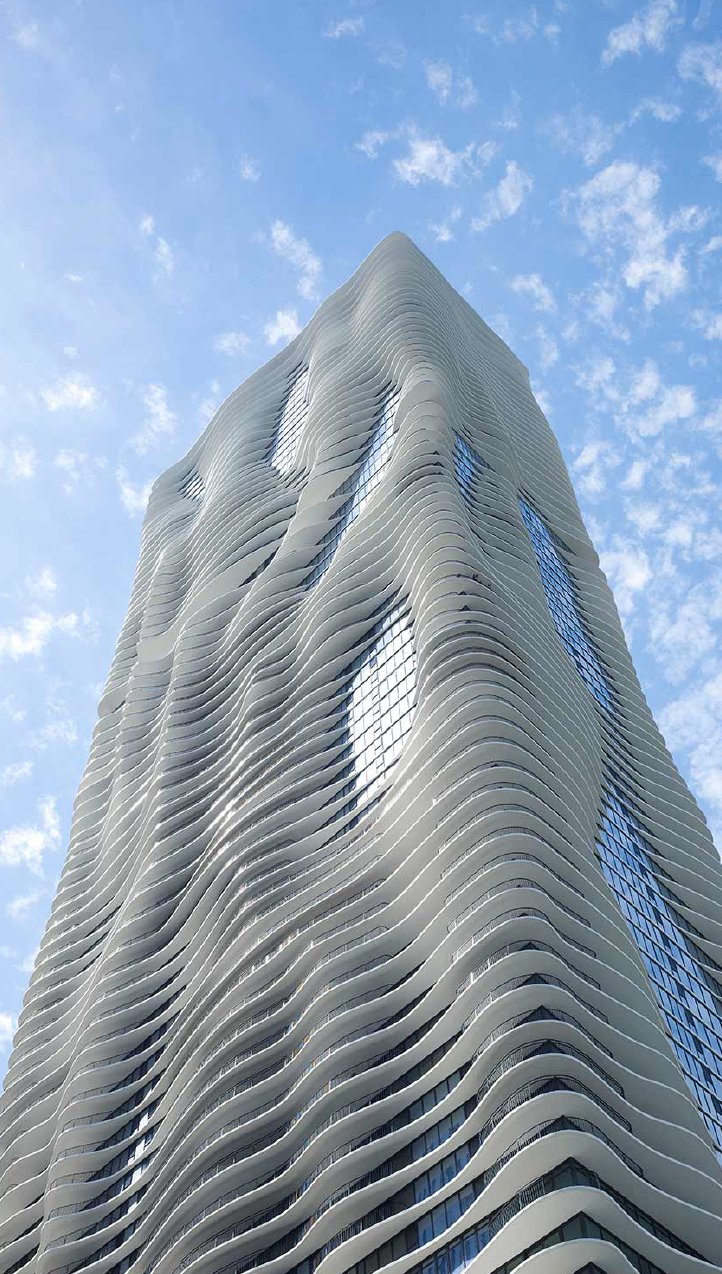Why Frank Lloyd Wright Still Matters
Every generation of architects has a handful of figures who completely change the rules of the game. For the United States, that person was Frank Lloyd Wright. His buildings are not just works of architecture—they are manifestos in wood, stone, glass, and concrete.
More than six decades after his death, Wright still dominates conversations in design studios, history lectures, and even real estate tours. From cantilevered houses floating above waterfalls to museums that spiral toward the sky, his creations are a reminder that architecture can be bold, human-centered, and timeless all at once.
Today, architects have powerful tools that Wright could only dream of—like 3D visualization and rendering—that allow us to imagine and refine our projects with precision. But to truly innovate, it helps to understand the masters. Let’s explore the ten Frank Lloyd Wright buildings every architect should know.
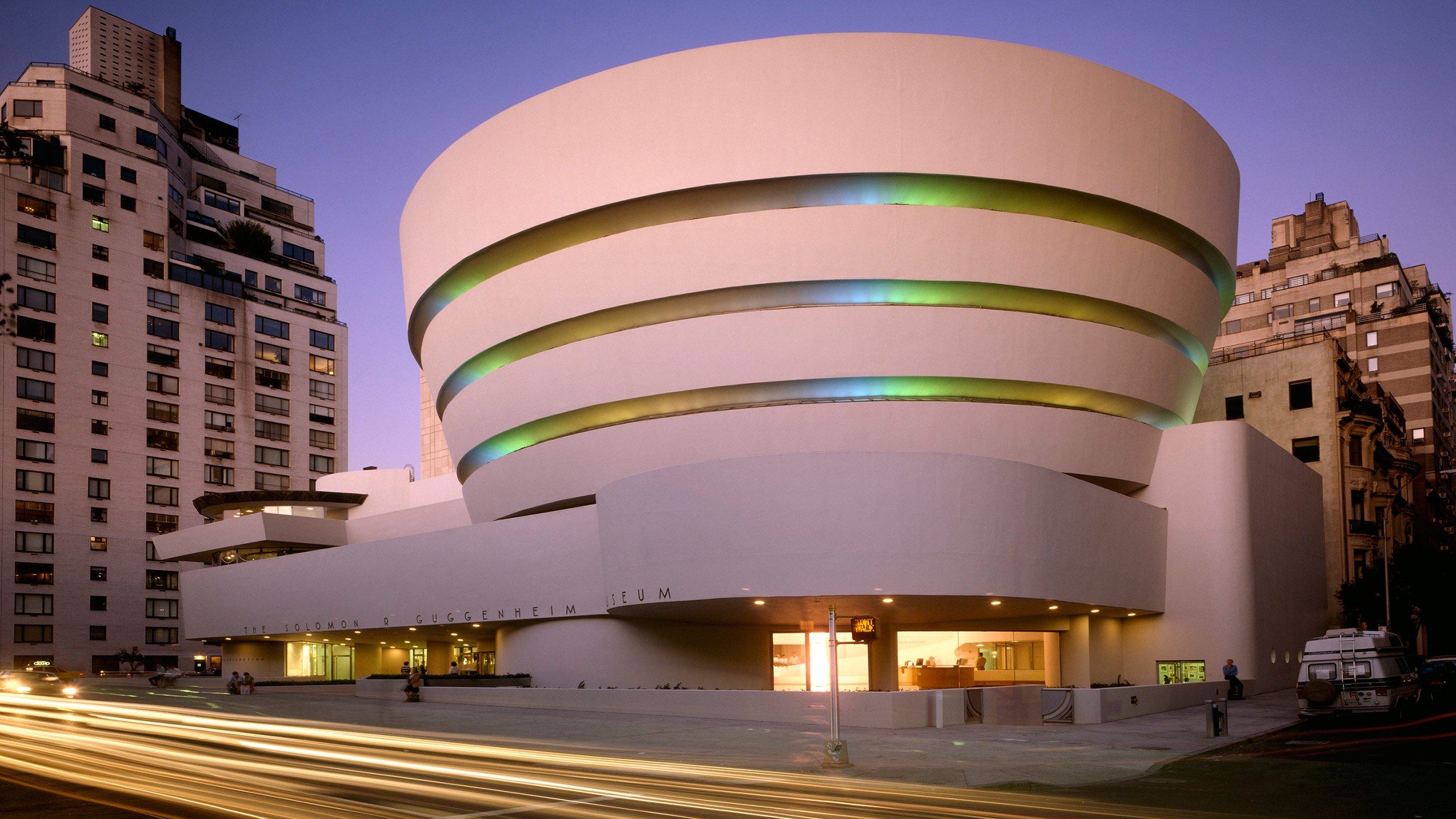
Who Was Frank Lloyd Wright?
Born in 1867 in the small town of Richland Center, Wisconsin, Frank Lloyd Wright grew up surrounded by the natural landscapes that would later influence his designs. Over his 70-year career, he completed more than 500 built works from over 1,100 designs, spanning private residences, civic centers, and museums.
He is often described as the father of modern American architecture. Why? Because he broke away from European traditions and created a distinctly American architectural language—one rooted in openness, horizontality, and a deep relationship with nature.
A Short Biography of Frank Lloyd Wright
Wright’s early career began in Chicago, where he worked under Louis Sullivan, often called the father of the skyscraper. Sullivan’s mantra of “form follows function” influenced Wright’s thinking, but the young architect quickly developed his own style.
In 1889, Wright built his first home and studio in Oak Park, Illinois. Over the next decades, he pioneered the Prairie Style, designing residences that blended with the landscape through horizontal lines, low-pitched roofs, and expansive windows.
By the 1930s, his career had new momentum with projects like Fallingwater, which redefined organic architecture. In his later years, he continued to experiment, culminating in iconic designs such as the Guggenheim Museum in New York City and the futuristic Marin County Civic Center in California.
What Is Frank Lloyd Wright Famous For?
Frank Lloyd Wright’s fame rests on several groundbreaking contributions:
-
Prairie Style: Emphasizing horizontality, open floor plans, and integration with the landscape.
-
Organic Architecture: His philosophy that buildings should grow naturally from their surroundings.
-
Usonian Houses: Affordable, efficient homes designed for middle-class families during the Great Depression.
-
Cultural Landmarks: From the spiraling Guggenheim to civic structures like the Marin County Civic Center, Wright shaped both private and public architecture.
Is Frank Lloyd Wright the Father of Architecture?
Technically, the title “Father of Architecture” goes back to Vitruvius, a Roman architect whose writings shaped centuries of design. However, within the American context, Frank Lloyd Wright is undeniably the father of modern U.S. architecture.
While contemporaries like Le Corbusier and Mies van der Rohe pushed European modernism, Wright gave America its own architectural identity—one that celebrated the landscape, embraced new materials, and put people at the center of design.
Top 10 Famous Frank Lloyd Wright Buildings Every Architect Should Know
1. Fallingwater (Mill Run, Pennsylvania)
Often called Wright’s masterpiece, Fallingwater is a weekend retreat built in 1936 for the Kaufmann family. Its daring cantilevered balconies extend directly over a waterfall, making the home feel like an extension of the landscape.
What architects can learn: true innovation comes from respecting the site rather than dominating it. Fallingwater remains one of the most celebrated houses in the world.
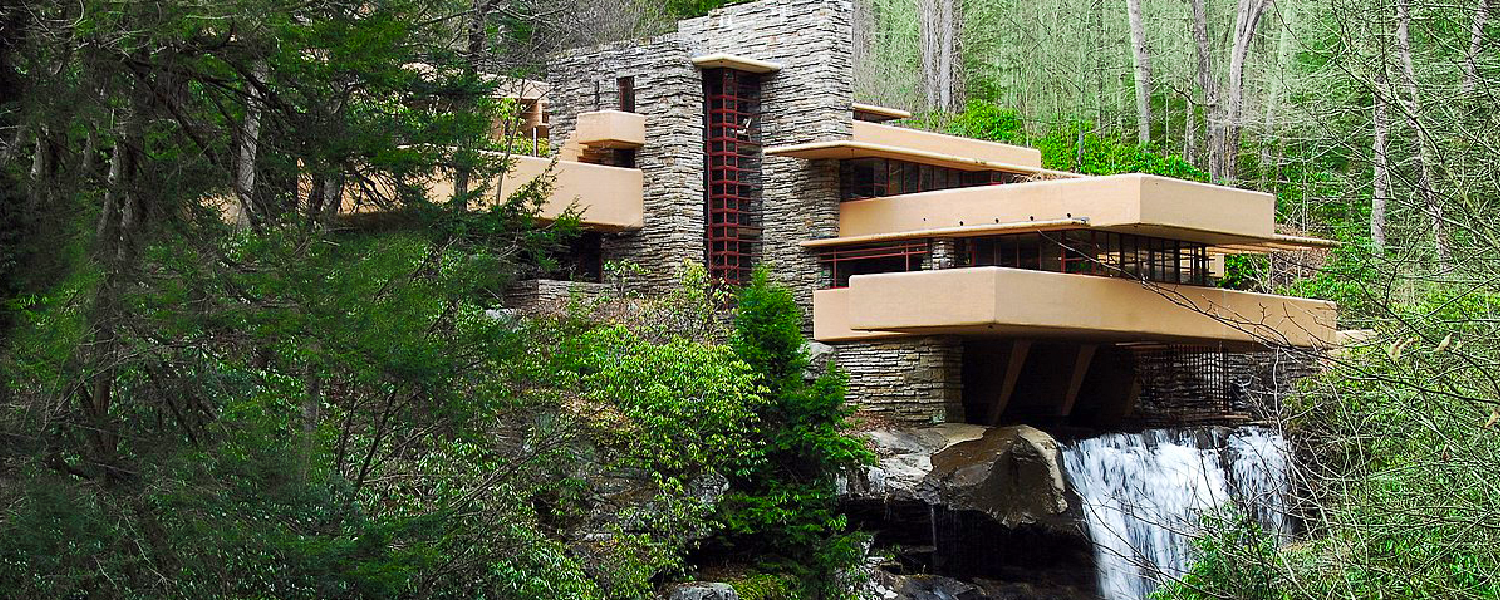
2. Solomon R. Guggenheim Museum (New York City, New York)
Completed in 1959, the Guggenheim reimagined what a museum could be. Instead of a series of disconnected galleries, Wright designed a continuous spiraling ramp leading upward to a skylit dome.
What architects can learn: sometimes breaking the rules—like rejecting traditional gallery boxes—creates timeless icons.
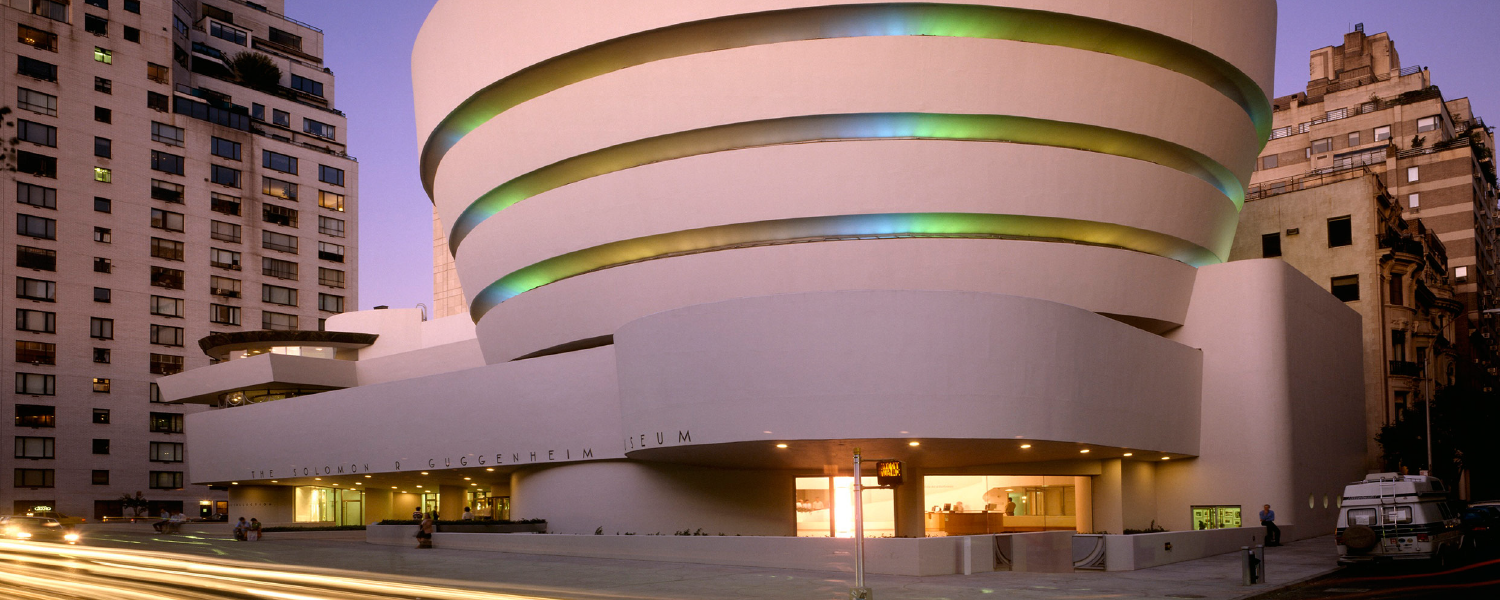
3. Robie House (Chicago, Illinois)
Finished in 1910, the Robie House is considered the pinnacle of Wright’s Prairie Style. With its strong horizontal lines, ribbon windows, and central fireplace, the home became a model for suburban living in the U.S.
UNESCO now recognizes the Robie House as a World Heritage Site, cementing its status as one of the most important homes of the 20th century.
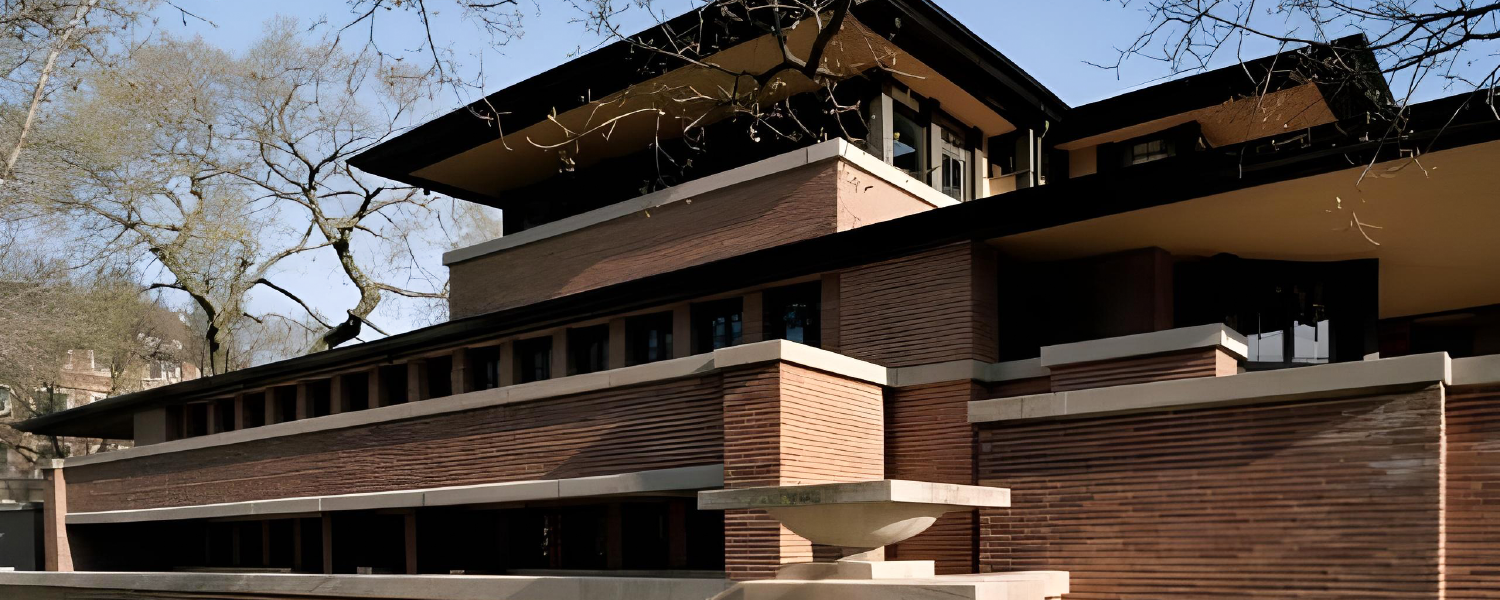
4. Taliesin (Spring Green, Wisconsin)
Wright’s personal estate, Taliesin, was more than a home—it was his design laboratory. Built in 1911 and rebuilt after devastating fires, it blends limestone from the nearby hills with sprawling terraces that echo the Wisconsin landscape.
For architects, Taliesin shows how personal experimentation can lead to universal architectural lessons.
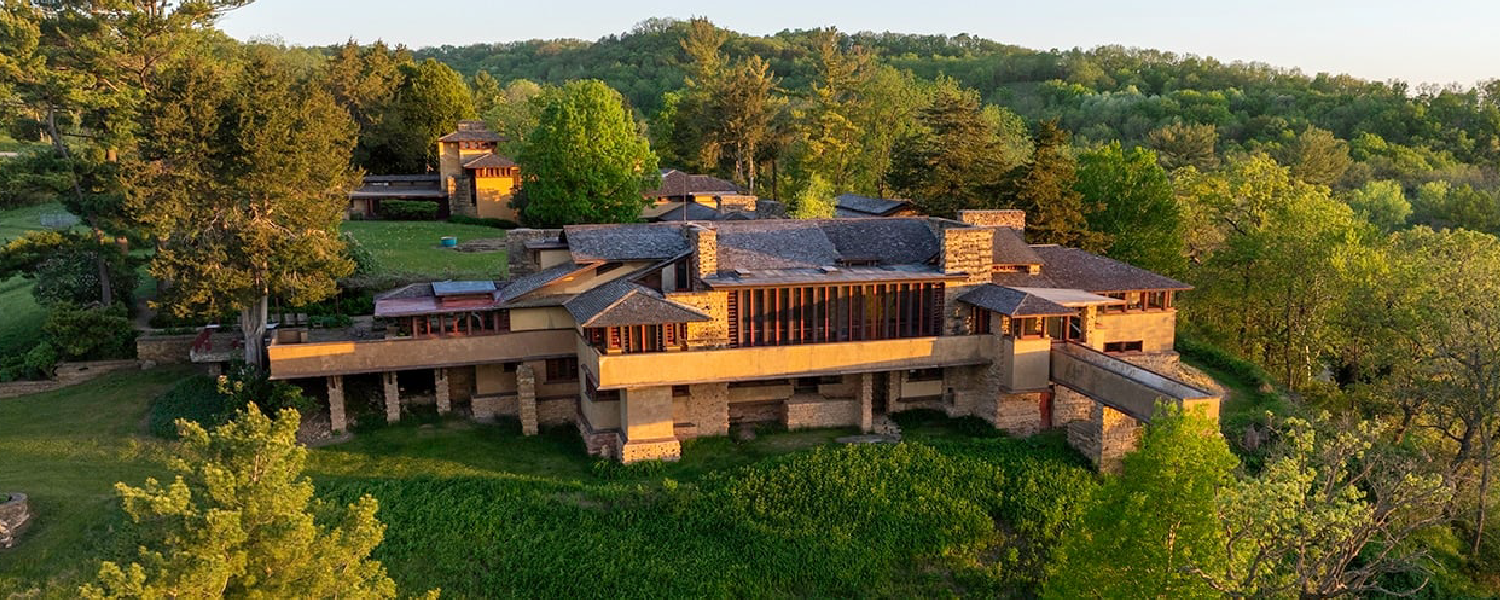
5. Taliesin West (Scottsdale, Arizona)
Wright’s winter residence and studio, Taliesin West, reflects his deep respect for the Arizona desert. Using “desert masonry”—stones and sand from the site itself—he created walls that seem to rise naturally from the ground.
Today, it serves as the headquarters of the Frank Lloyd Wright Foundation, inspiring new generations of architects.
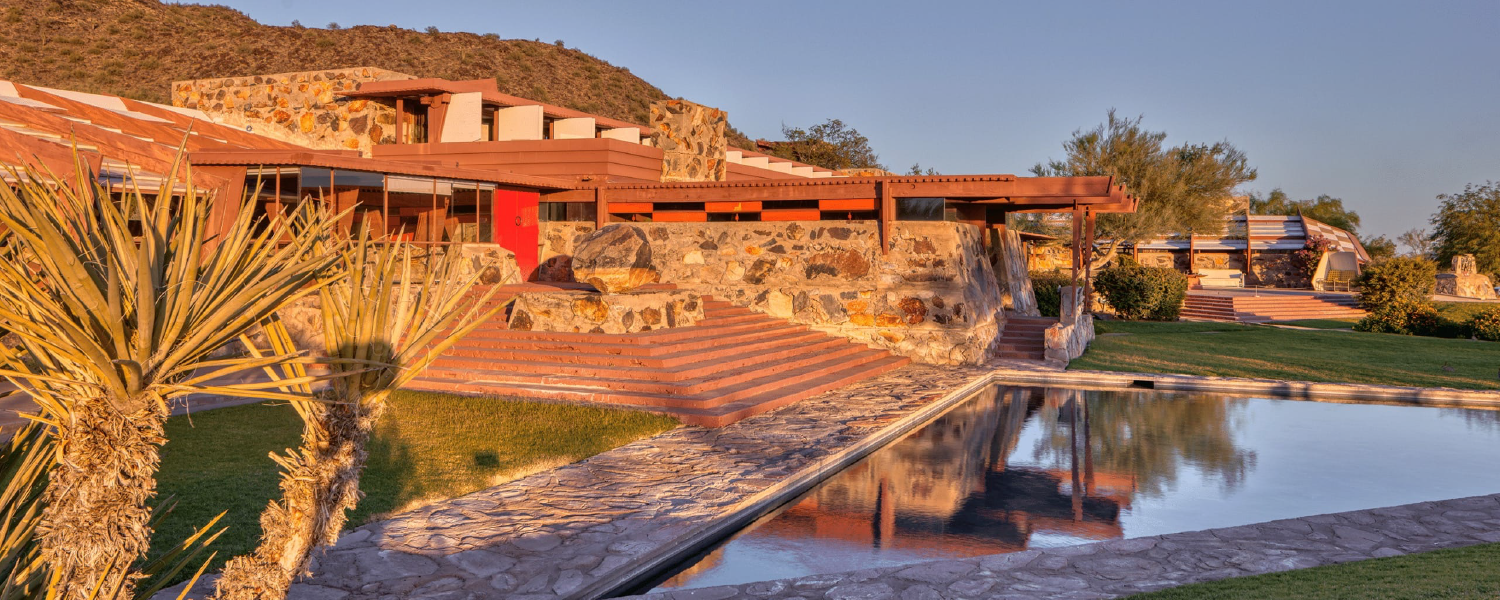
6. Unity Temple (Oak Park, Illinois)
Built between 1905 and 1908, Unity Temple was revolutionary for its time. Wright used reinforced concrete—a radical material choice for a church—to create bold, geometric forms.
The building is considered one of the first examples of modernist architecture worldwide.
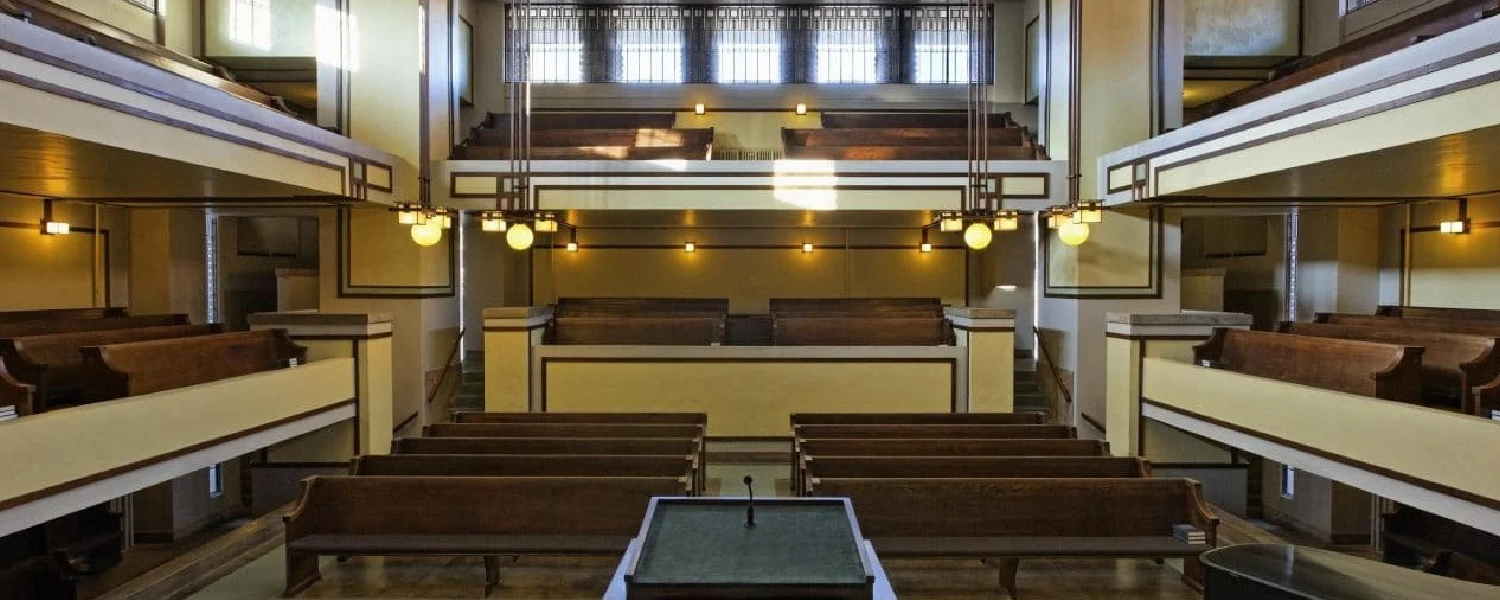
7. Darwin D. Martin House (Buffalo, New York)
Constructed in the early 1900s, this sprawling estate showcases Wright’s mature Prairie Style. It’s not just one house, but a complex of interconnected structures designed to blend with the landscape.
For architects, the Martin House demonstrates the power of thinking beyond the single-family home and designing for the broader environment.
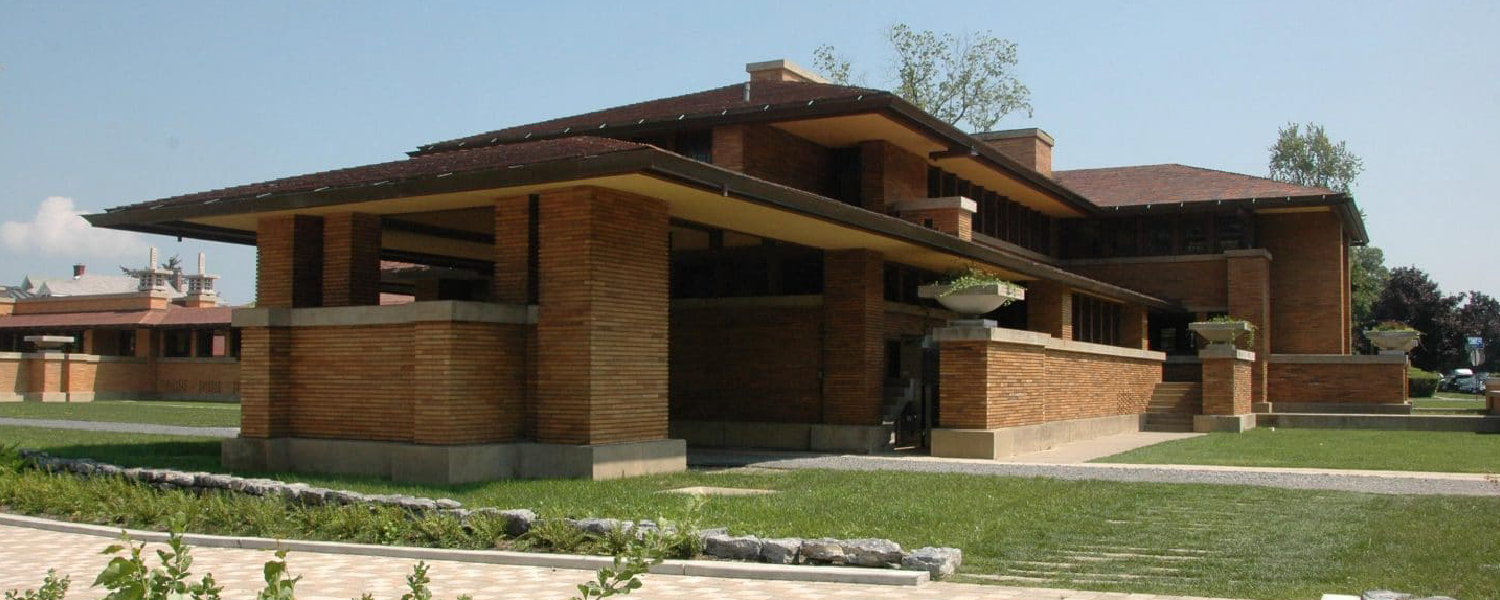
8. Hollyhock House (Los Angeles, California)
Commissioned by oil heiress Aline Barnsdall, Hollyhock House (1919) was Wright’s first project in California. Its design blends Mayan influences with motifs inspired by the hollyhock flower.
Now a UNESCO World Heritage Site, the house represents Wright’s willingness to experiment with cultural references and new building methods.
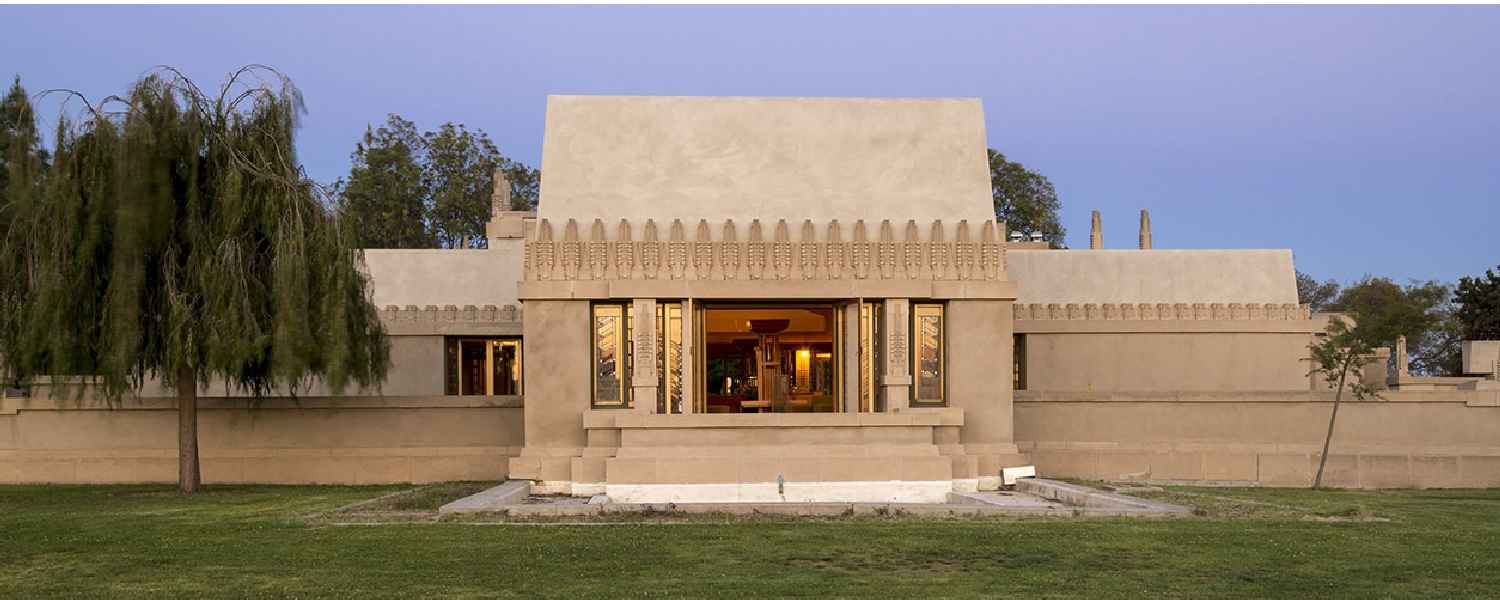
9. Herbert and Katherine Jacobs House (Madison, Wisconsin)
Built in 1937, this modest home became the first of Wright’s Usonian Houses—affordable dwellings for the American middle class. With efficient layouts and built-in furniture, the Jacobs House proved that great design could be accessible.
It remains a lesson for today’s architects grappling with housing affordability.
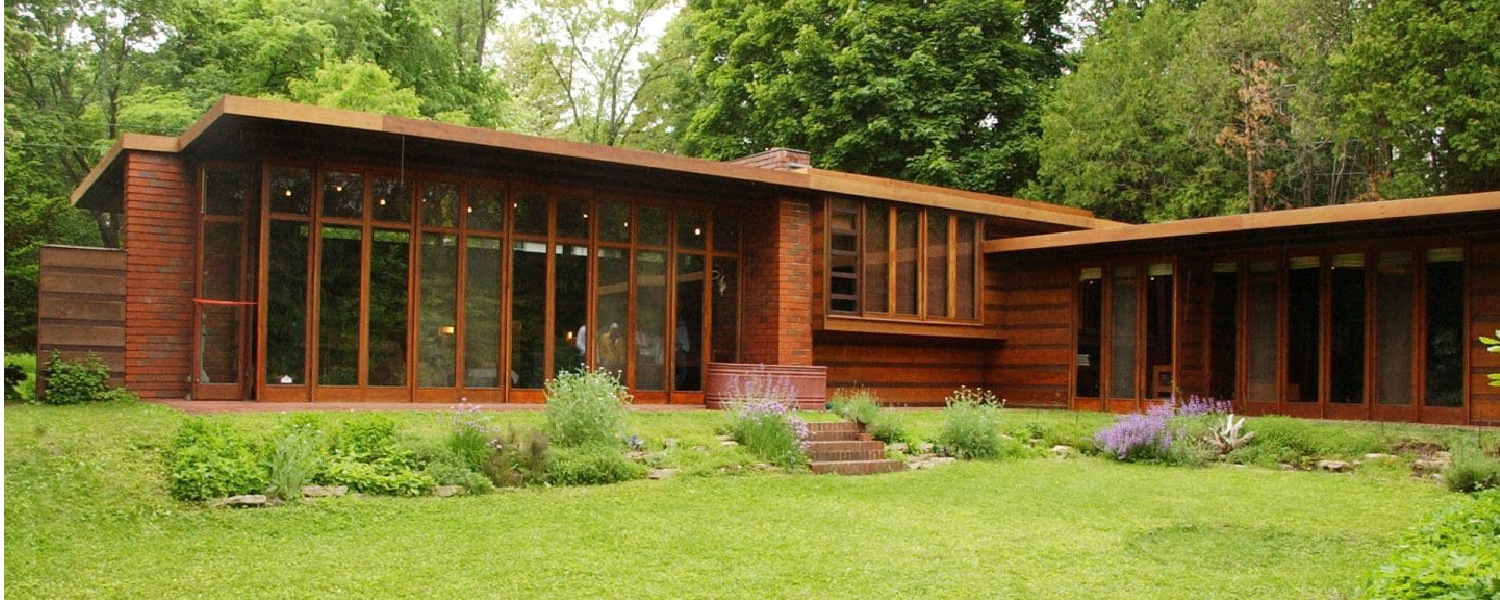
10. Marin County Civic Center (San Rafael, California)
Wright’s final major work, the Marin County Civic Center (1962), is a futuristic government complex with sweeping curves and sky-blue domes. It embodies his vision of civic architecture that inspires rather than intimidates.
The building still feels modern decades later, a testament to Wright’s forward-thinking approach.
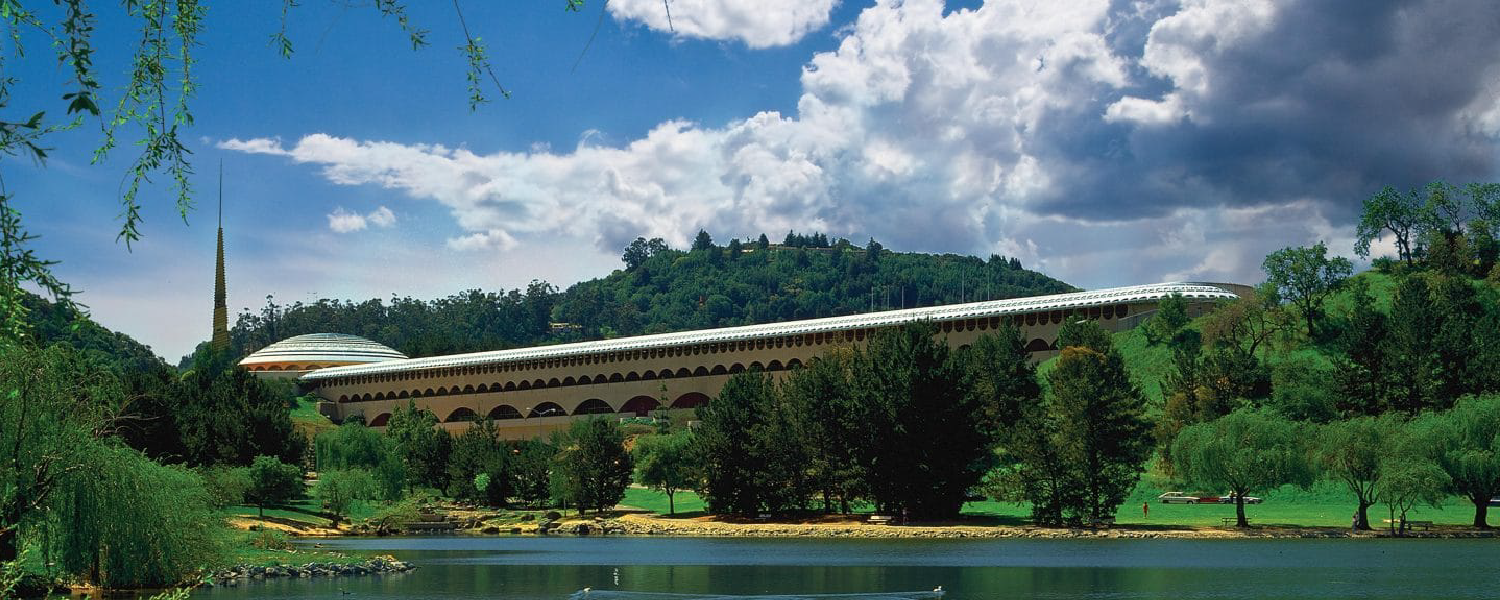
The UNESCO World Heritage Recognition
In 2019, eight of these buildings—along with the Price Tower and Jacobs House—were officially added to the UNESCO World Heritage List. This recognition placed Wright’s work alongside global icons like the Taj Mahal and the Sydney Opera House.
For architects, the designation underscores that Wright’s ideas are not just American treasures—they are part of the world’s cultural heritage.
Lessons for Today’s Architects
So, what can today’s professionals take away from Wright’s legacy?
-
Integrate with nature: Buildings should respond to their environment, not fight it.
-
Innovate with materials: From concrete at Unity Temple to desert masonry at Taliesin West, Wright pushed boundaries.
-
Prioritize experience: Interiors matter as much as exteriors—light, flow, and spatial comfort all define a building’s success.
These lessons feel especially relevant today, as architects use technology to design spaces that are both sustainable and human-centered.
Connecting Wright’s Vision with Modern 3D Rendering
Frank Lloyd Wright revolutionized architecture by rethinking how buildings could interact with people and their environment. Imagine if he had today’s tools—3D renderings, VR tours, and animations. His ideas might have spread even faster.
For modern architects, these tools are no longer optional; they are essential for communicating complex designs with clients and stakeholders. Just as Wright used drawings and models to share his vision, today’s professionals can use hyper-realistic 3D Rendering Services to bring concepts to life before a single brick is laid.
Discover how you can bring your architectural vision to life with hyper-realistic 3D renderings. Learn more about our 3D Rendering Services.
Frequently Asked Questions (FAQs) about Frank Lloyd Wright
-
Who was Frank Lloyd Wright?
He was a visionary American architect (1867–1959) who designed over 1,100 projects and shaped modern architecture.
-
When did Frank Lloyd Wright die?
In 1959, just months before the Guggenheim opened. His passing marked the end of an era, but his buildings continue to inspire architects and builders worldwide.
-
What is Frank Lloyd Wright famous for?
He is best known for the Prairie Style, Usonian homes, organic architecture, and masterpieces like Fallingwater and the Guggenheim Museum.
-
Who is the father of architecture?
Historically, Vitruvius (a Roman architect) is considered the “Father of Architecture.” However, Frank Lloyd Wright is often called the father of modern American architecture.
-
Which Frank Lloyd Wright buildings are UNESCO World Heritage Sites?
Unity Temple, Robie House, Taliesin, Taliesin West, Hollyhock House, Fallingwater, Jacobs House, the Guggenheim Museum, Price Tower, and the Marin County Civic Center.
Conclusion
Frank Lloyd Wright remains an unmatched figure in American design, and his buildings continue to teach lessons about innovation, context, and human-centered design. For architects, developers, and builders in the U.S., studying his work is not just about appreciating history—it’s about finding inspiration for the future.
And while Wright worked with the tools of his time, today’s architects can leverage 3D visualization to achieve similar breakthroughs. By blending timeless design principles with cutting-edge technology, the next great wave of architecture can carry Wright’s spirit into the 21st century and beyond.
